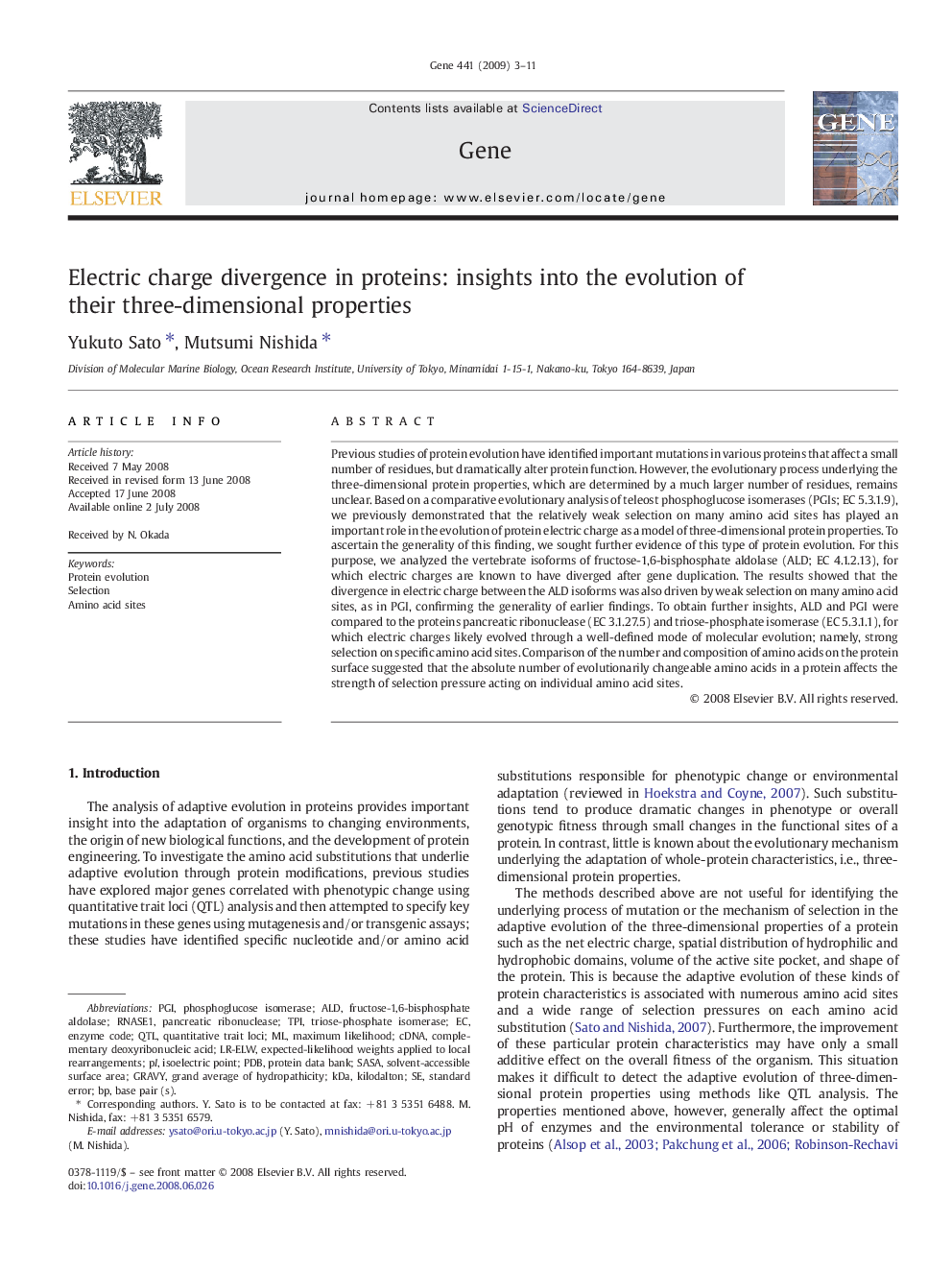| Article ID | Journal | Published Year | Pages | File Type |
|---|---|---|---|---|
| 2818785 | Gene | 2009 | 9 Pages |
Previous studies of protein evolution have identified important mutations in various proteins that affect a small number of residues, but dramatically alter protein function. However, the evolutionary process underlying the three-dimensional protein properties, which are determined by a much larger number of residues, remains unclear. Based on a comparative evolutionary analysis of teleost phosphoglucose isomerases (PGIs; EC 5.3.1.9), we previously demonstrated that the relatively weak selection on many amino acid sites has played an important role in the evolution of protein electric charge as a model of three-dimensional protein properties. To ascertain the generality of this finding, we sought further evidence of this type of protein evolution. For this purpose, we analyzed the vertebrate isoforms of fructose-1,6-bisphosphate aldolase (ALD; EC 4.1.2.13), for which electric charges are known to have diverged after gene duplication. The results showed that the divergence in electric charge between the ALD isoforms was also driven by weak selection on many amino acid sites, as in PGI, confirming the generality of earlier findings. To obtain further insights, ALD and PGI were compared to the proteins pancreatic ribonuclease (EC 3.1.27.5) and triose-phosphate isomerase (EC 5.3.1.1), for which electric charges likely evolved through a well-defined mode of molecular evolution; namely, strong selection on specific amino acid sites. Comparison of the number and composition of amino acids on the protein surface suggested that the absolute number of evolutionarily changeable amino acids in a protein affects the strength of selection pressure acting on individual amino acid sites.
